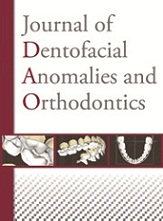Article contents
Current role of orthodontists in treating temporo-mandibular disorders
Published online by Cambridge University Press: 18 July 2012
Abstract
At one time or another all orthodontists have to deal with a patient in their daily practice who sufferers from a temporo-mandibular disorder. Usually not well trained in this area they avoid the problem by referring the patient to an ‘‘occlusodontist’’ even though the majority of these TMD problems can be resolved by simple non-invasive techniques that any dentist can readily perform.
In this article I describe the therapeutic sequence of events. When pain is present, practitioners devote the initial appointment to establishing a diagnosis of ‘‘painful disorder.’’ At the same time they must explain to their patients what the different psychosocial components of the TMD are. While the clinical examination practitioners conduct next is simple and speedily completed, its correct execution requires a certain apprenticeship. The result of properly concluded procedures is a precise diagnosis of the functional TMD problem.
Then I review the wide range of therapeutic possibilities that are currently available, which are comparable to those employed in medical rheumatology.
Finally, I present the treatment of a patient with TMD to illustrate the clinical application of this up-to-date approach.
Keywords
- Type
- Research Article
- Information
- Copyright
- © RODF / EDP Sciences
- 1
- Cited by




